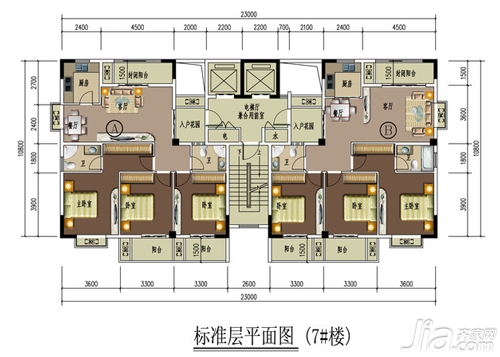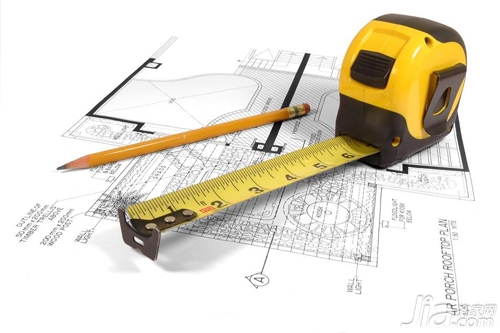Before the renovation, it is generally necessary to first measure the room. Many people see the designer's records of a lot of data on the scalp. In fact, the amount of room is not so difficult to imagine, which is also a rule to follow. The first thing is to accurately measure the number of rooms, so that the process of communicating with the decoration company in the later period can also avoid falling into a trap. Here's a step-by-step guide for you. Step one: Get a detailed standard floor or home floor plan According to the detailed residential floor plan measurement and calculation can be convenient and accurate. The main data that should be included in the floor plan are: the dimensions of each room's axis (ie, the dimension between the center lines of the load-bearing walls or columns) and the total size of the external walls, ie the two dimensions, and the area of ​​use of each room. Most of the households are on the standard floor. Measurements and calculations are mainly based on standard floor plans and areas. If the floor on which the residence is located is special, such as the bottom floor and the top floor, the drawings of the floor on which the residence is located should be used. In order to measure the area of ​​a house, it is not necessary to measure the area of ​​the entire building. Step 2: Measure and calculate your own internal use area and building area Use area estimates. The size obtained by measuring the interior of the room is the size of the room axis minus the thickness of the wall and the thickness of the screed and cannot be used as the size in the area. In other words, the area calculated from this size is not the use area. The use area is calculated based on the internal dimensions of the room, which is the dimension of the axial dimension to remove the thickness of the structure. In general, when the load-bearing wall is a brick wall, the structure is 24 cm thick, the wall thickness in the cold area is 37 cm, the thickness of the concrete wall structure is 20 cm or 16 cm, and the non-bearing walls are 12 cm, 10 cm, and 8 cm. In general, the axis is located in the middle of the wall, and each side is half a wall thickness. White plaster thickness is generally 2-3cm. Decoration experience room
During the process of road work, drop glass bead onto the road line painted with thermoplastic paint which is heated to certain temperature while the paint is still wet, thus to increase the reflectivity of road marking. According to the specification of Communication Industry Standard of the People`s Republic of China No. JT/T446-2001, the granulometry for drop on glass bead is shown in the table below:
Other parameters keep conformity with the type of intermix.
The glass bead can be produced based on the standard of countries or areas, such as EN1423/1424, AASHTO M247, BS6088, JIS R3301 and KS L2521 etc.
Drop On Glass Beads,Drop-On Glass Beads Road Marking,Reflextive Drop On Glass Beads,Drop On Glass Beads Jewellery Marking CHIYE GLASS BEAD (HEBEI) CO., LTD , https://www.chiyeglassbeads.com


In fact, it is not difficult to measure the room in just three steps.
1 2 Next> Total 2 Page
Page to page